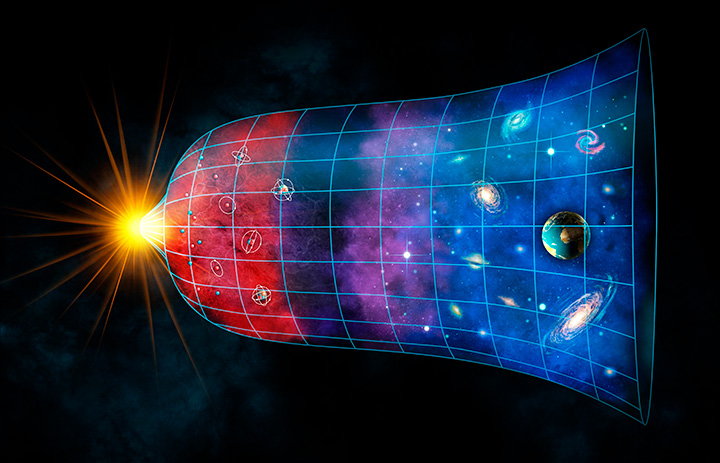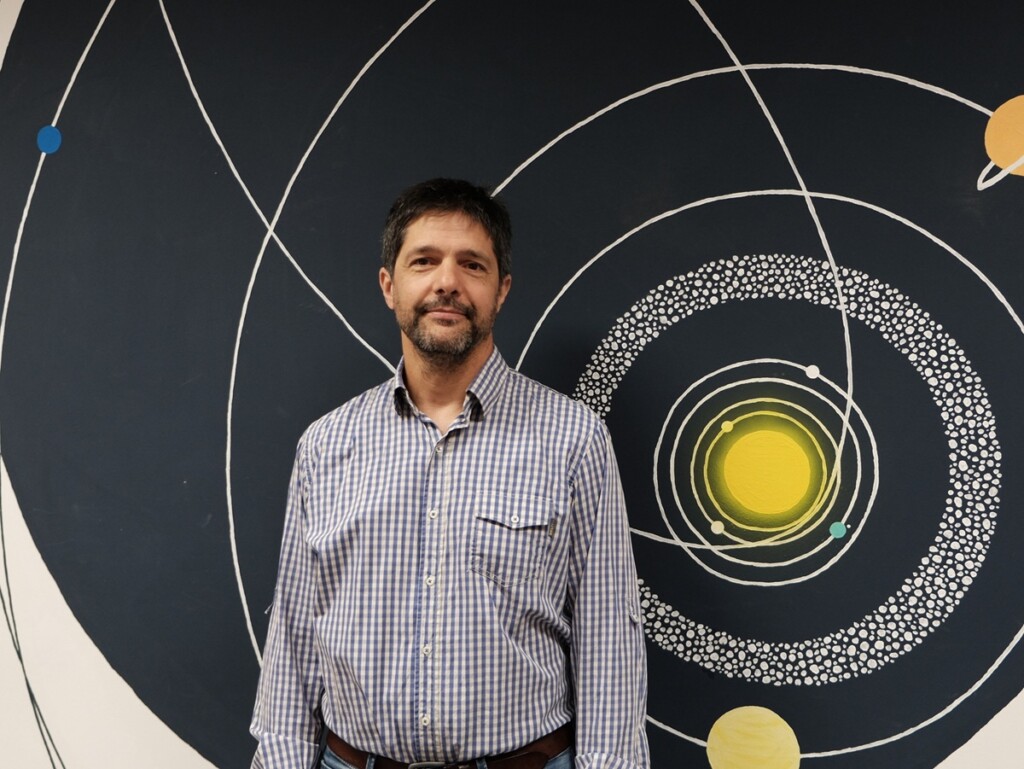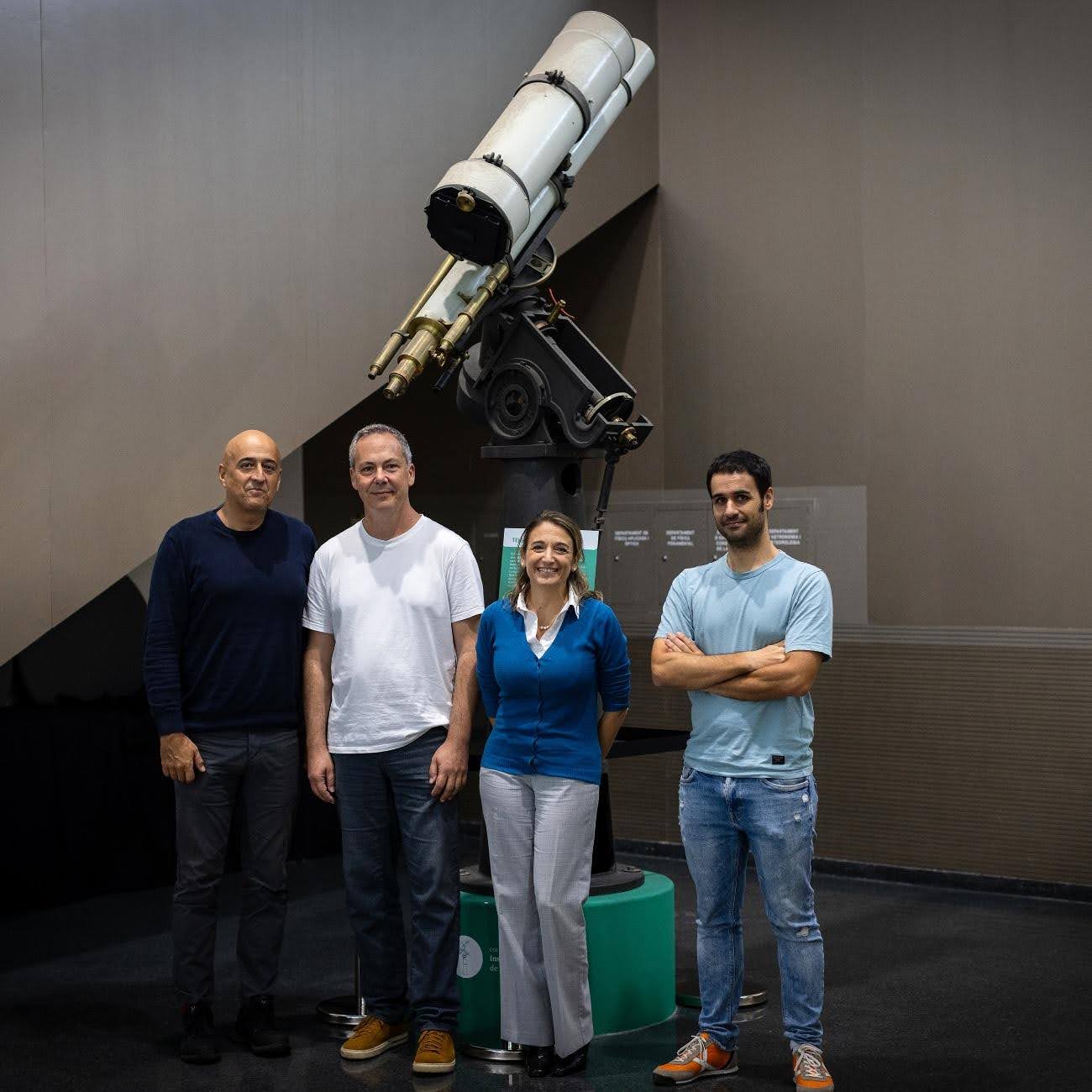Two ERC Synergy Grants to clarify the nuclear physics of the solar model and resolve the Hubble tension
- Aldo Serenelli, director of the Institute of Space Sciences (ICE-CSIC) and a member of the IEEC, co-leads the LUNANOVA project to eliminate the uncertainty present in the nuclear physics of the solar model
- Fred Courbin, ICREA researcher at the Institute of Cosmos Sciences (ICCUB) and also an IEEC member, co-leads the RedH0T project team, which aims to resolve the Hubble tension, one of the challenges in modern cosmology
- These grants, awarded by the European Research Council, will distribute €684 million in funding among 66 international research groups

Today, the winners of the ERC Synergy Grant have been announced. These grants from the European Research Council support teams of two to four researchers to undertake research requiring extensive collaboration across different disciplines. Two projects involving several researchers from the Institute of Space Studies of Catalonia (IEEC — Institut d’Estudis Espacials de Catalunya) will benefit from these resources.
On the one hand, the Institute of Space Sciences (ICE-CSIC) has received an ERC Synergy grant for a project it is co-leading with other European institutions, which seeks to revolutionise the current understanding of the Sun. With a budget of 14 million euros, LUNANOVA will eliminate the uncertainty currently present in the nuclear physics of the solar model.
On the other hand, an international team led by researchers from the Institute of Cosmos Sciences of the University of Barcelona (ICCUB) has received another ERC Synergy grant to resolve the Hubble tension, one of the outstanding challenges in modern cosmology and a source of disagreement when it comes to quantifying the rate of the universe’s expansion. The project, called RedH0T, will receive more than 12 million euros of funding.
In total, 66 research groups have been recognised in this call, which will receive €684 million in funding.
LUNANOVA: Towards a new model of the Sun
The LUNANOVA project is led by Daniel Bemmerer from Helmholtz-Zentrum Dresden-Rossendorf (HZDR; coordinating), Aldo Serenelli, director of the ICE-CSIC and IEEC member, Alba Formicola from Istituto Nazionale di Fisica Nucleare (INFN) and Gianluca Imbriani from Università degli studi di Napoli Federico II.
Deep inside our Sun, nuclear reactions burn hydrogen, the lightest chemical element, to helium, the second lightest. These fusion processes and their implications are described in the so-called standard solar model. This model is the blueprint for understanding thousands of solar-like stars. For the Sun, the model can be validated by observations of solar neutrinos, of seismic waves at the solar surface, and of the elemental abundances in the solar atmosphere.
However, there is a surprising problem: the computer model of our Sun is much less precise than these very difficult observations. To put it figuratively, the solar model is standing on its head (the observations), not on its feet (the input physics). A fundamental reason for this problem lies in the uncertainties of nuclear physics.
Starting in 2026, LUNANOVA aims to solve this problem. The four lead scientists and their teams will perform accelerator experiments deep underground at the Gran Sasso National Laboratory of the National Institute for Nuclear Physics, in Italy; at the Felsenkeller laboratory in Dresden, and at other labs in Germany and Italy. They will study the solar fusion reactions. The group will interpret their data first in the nuclear context and, subsequently, in the solar and astrophysical contexts, informing a completely new solar model. Over a time span of six years, LUNANOVA will thus remove the now-dominant nuclear physics uncertainty from the solar model.
“LUNANOVA comes at the right time. Plato, ESA’s M3 mission for planet hunting and asteroseismic characterisation of solar-like stars will fly at the end of 2026, and a large part of its core science program focuses on stars slightly more massive than the Sun, the right spot in which the nuclear reactions that are the core science of LUNANOVA matter most,” says Serenelli.

RedH0T and the current cosmological model
Licia Verde, ICREA researcher at ICCUB, is the coordinator of the RedH0T project. Its principal investigators also include Fred Courbin, ICREA researcher from the IEEC at ICCUB; Julien Lesgourques, from Aachen University and Adam Riess, from Johns Hopkins University, winner of the 2011 Nobel Prize in Physics for demonstrating that the expansion of the universe is accelerating. The team at the ICCUB is completed by Héctor Gil-Marín (ICCUB-IEEC) and Raúl Jiménez-Tellado (ICREA-ICCUB).
Despite the remarkable success of the standard cosmological model over the last two decades, recent observations and distance measurements using a wide range of cosmological instruments suggest cracks in this scientifically accepted paradigm. Differences have appeared in the measurements of quantities (tensions) that the current cosmological model predicts to be equal. The most prominent tension concerns the Hubble parameter, which quantifies the expansion of the universe approximately 13 billion years after the Big Bang.
“RedH0T aims to address one of the challenges that cosmology has faced for years: Is the significant discrepancy between measurements of the Hubble constant (H₀) caused by observational errors or limitations of the current cosmological model? If the latter is true, we would be facing one of the most significant discoveries of the 21st century, with profound implications for fundamental physics,” says Verde. RedH0T is expected to improve on all current measures of H₀ with cross-checks and internal consistency, thereby producing robust results that can guide cosmologists in revising the current paradigm.
The project also stands out for its innovative approach, which is pioneering in cosmology. RedH0T introduces the red-teaming method, inspired by cybersecurity. “In the field of cybersecurity, ethical hackers conduct simulated, non-destructive cyberattacks to test the effectiveness of systems. In our case, we want each methodology for measuring the Hubble constant to be analysed by three different teams, which allows each method to be validated or questioned with maximum transparency and rigour, promoting scientific consensus,” says principal investigator Courbin.

Contacts
IEEC Communication Office
Castelldefels, Barcelona
E-mail: comunicacio@ieec.cat
Lead Researcher at the IEEC
Aldo M. Serenelli
Institute of Space Studies of Catalonia (IEEC)
Institute of Space Sciences (ICE-CSIC)
E-mail: aldos@ieec.cat, aldos@ice.csic.es
Frédéric Courbin
Institute of Space Studies of Catalonia (IEEC)
Institute of Cosmos Sciences (ICCUB)
E-mail: courbin@ieec.cat, courbin@icc.ub.edu
About the IEEC
The Institute of Space Studies of Catalonia (IEEC — Institut d’Estudis Espacials de Catalunya) promotes and coordinates space research and technology development in Catalonia for the benefit of society. IEEC fosters collaborations both locally and worldwide and is an efficient agent of knowledge, innovation and technology transfer. As a result of more than 25 years of high-quality research, done in collaboration with major international organisations, IEEC ranks among the best international research centres, focusing on areas such as: astrophysics, cosmology, planetary science, and Earth Observation. IEEC’s engineering division develops instrumentation for ground- and space-based projects, and has extensive experience in working with private or public organisations from the aerospace and other innovation sectors.
The IEEC is a non-profit public sector foundation that was established in February 1996. It has a Board of Trustees composed of the Generalitat de Catalunya, Universitat de Barcelona (UB), Universitat Autònoma de Barcelona (UAB), Universitat Politècnica de Catalunya · BarcelonaTech (UPC), and the Spanish Research Council (CSIC). The IEEC is also a CERCA centre.
